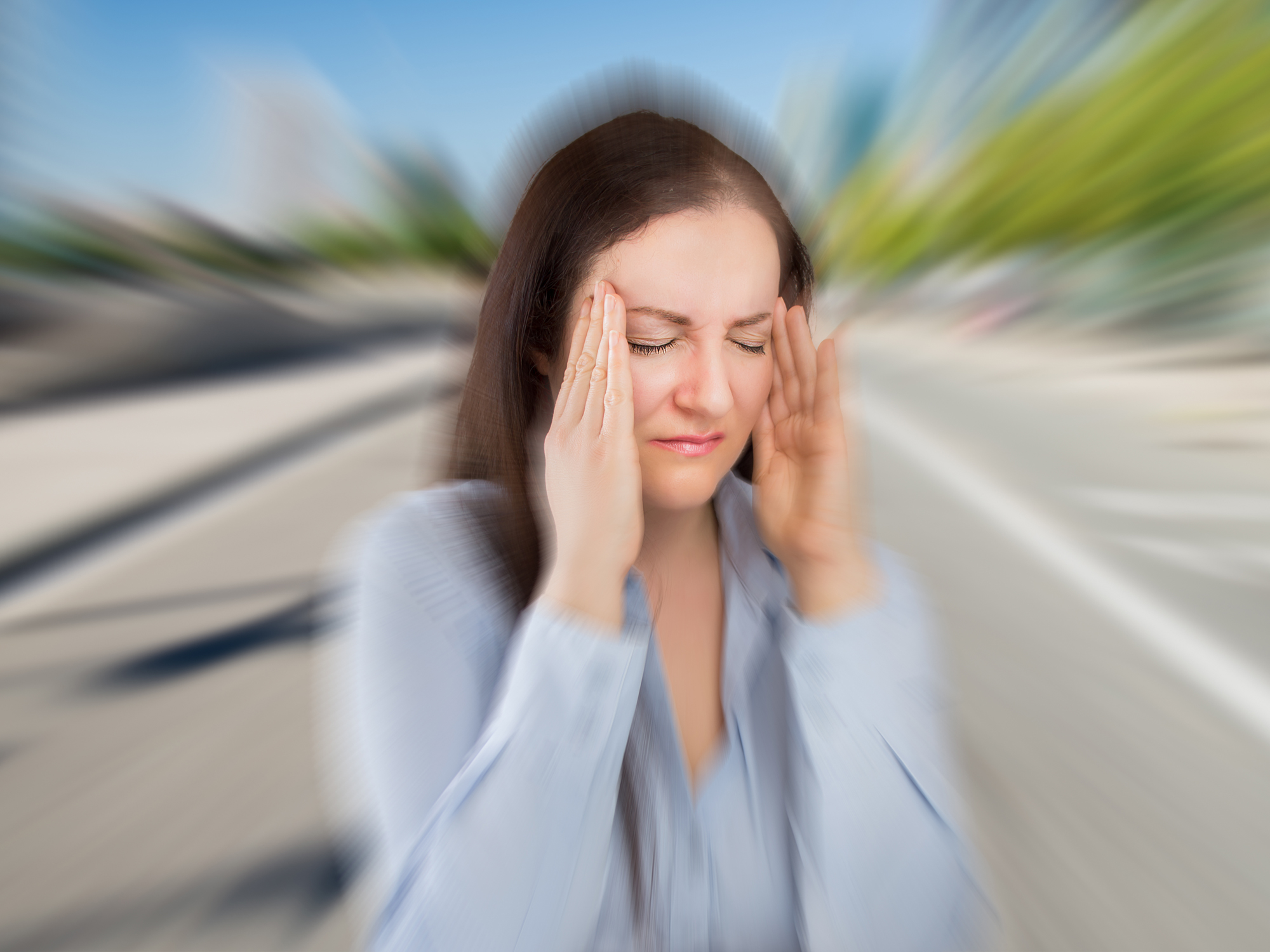Get Easy Health Digest™ in your inbox and don’t miss a thing when you subscribe today. Plus, get the free bonus report, Mother Nature’s Tips, Tricks and Remedies for Cholesterol, Blood Pressure & Blood Sugar as my way of saying welcome to the community!
The 8 biggest headache myths

When it comes to making a health plan that works and sticking to it, you must also avoid the pitfalls.
And when it comes to a subject as complex as headaches and migraines, it’s important to separate headache myths from facts.
The line between fact and fiction is often thin. People form beliefs on what they think sounds reasonable and their knowledge of a specific topic, whether they gain that information from a friend, doctor, read it in a magazine or online or learn about it on the news.
As a life-long sufferer of migraines myself, that’s what I began doing over two decades ago when I crafted and began implementing my “Headache Relief Action Plan.”
To manage migraines, it’s necessary to have a clear understanding of all the components involved in headache and migraine triggers, relief and prevention. This begins with clearing up the headache myths and setting forth the facts of the situation… the topic of my post today.
For those headache myths you believe, be open to understanding the myths and then to believing the facts. It is my sincere hope that by understanding these basic yet simple facts, you will find a more positive view of your condition, and, as a result, be more inclined to follow the best therapeutic solutions for you.
Headache Myth #1 – All headaches are the same
One of the most pervasive headache myths of all is the notion there is only one type of headache and migraine and it just happens to have different symptoms for different people. It is easy to see how people might think headaches are a single condition. After all, many headache types share common triggers, and they all have pain in the head as their main symptom. But the fact is there are over 30 different types of headaches and migraines, which are divided into primary and secondary types.
Just having basic clarity on this myth alone should provide you with some anxiety relief about the future potential of your headache-free life goal. Simply knowing headaches are not a single disease, but various head-pain-related symptoms caused by imbalances within the body that can be managed and corrected with natural, noninvasive approaches should provide you with enough hope for change that you find almost immediate improvement in your daily outlook.
Headache Myth #2 – Migraines are just bad headaches
Migraines are among the worst headache types and certainly take a toll. For many, just hearing the diagnosis “migraine,” or assuming it, is enough to cause emotional stress, worry and depression about one’s future.
The fact is that headaches and migraines are different things. Migraine is a narrowly specific type of headache based in temporary neurological dysfunction. Most headaches do not fall into this category or share the same symptoms of aura, nausea, sweating, and prolonged pain for days as migraines.
Migraines are relatively rare when compared to tension type headaches, which are due to muscle contraction around the shoulders and neck and cause referred pain to the head. Putting to bed the myth that migraines are the same as bad headaches should provide relief in your outlook and expectations.
Headache Myth #3 – Only women get migraines
While it is true that more women than men get migraines, the fact is that anyone can experience a migraine, including children. The statistics of the World Health Organization (WHO) show that migraine strike 18% of women, 8% of men, and 10% of children. It is a myth to believe that only women get migraines; however, they are serious and need be treated so keep an open mind and read on to see how to distinguish whether you are experiencing migraines or another kind of headache. The good news is the “Headache Relief Acton Plan” addresses all types of headaches.
Headache Myth #4 – Headaches are a normal part of life
A simple look at the people around you, the commercials on television and the shelves in pharmacies seems to reinforce the idea that “everyone” gets headaches. While this may be an accurate assessment, it is not a “truth” that headaches are a normal or natural part of life.
To begin correcting this myth, it is important to know that headaches are symptoms and, therefore, have nothing to do with any “normal” part of life. Most headaches are simply the result of a combination of poor lifestyle choices. By changing your lifestyle choices, and altering your activities in daily life, you can reduce the triggers and stop the headache cycles.
Headache Myth #5 – If you get headaches, you shouldn’t exercise
This myth is most believed by those suffering with headaches because, well, it hurts a lot to exercise when you have a headache. Also, when you have chronic migraines, the days between episodes are filled with rest to recuperate and regain your energy. So, exercise is the last thing people with headaches think about.
The right kind of exercise is essential to headache prevention. You should begin exercising slowly, lightly, and within limits so as not to worsen or aggravate headache or migraine conditions. Exercises like walking, yoga, Tai chi, Qigong, and even Pilates are good for those who get headaches. The more you can do, beginning slowly at first and more over time, the more you can increase your vitality and reduce certain headache and migraine triggers.
Headache Myth #6 – The environment has no effect on headaches and migraines
The very opposite of this myth is true and people who experience chronic headaches can usually attribute them to a time and place. In my own personal experience, I would get headaches in some department stores but not in others; when getting off airplanes; and right before or after a rain storm or on extremely humid days or in damp basements. My other headache triggers included every time I was in a room cleaned with Pine-Sol or Pledge.
All of my headache trigger examples had an environmental issue in play that includes air quality (i.e., pressure, humidity, pollution), the ratio of negative to positive ions in the atmosphere, the quantity of toxic chemicals used to clean clothing or surfaces you normally come into contact with, the relative stuffiness and heat of a room, and the type of lighting used to illuminate a work, shopping or living space. There are many environmental factors that come into play as potential headache-triggers, and the “Headache Relief Action Plan” takes them into account.
Headache Myth #7 – There’s no cure for headaches and migraines
This myth is harmful and holds people hostage to the false idea they have to live in pain. It’s total nonsense so please do not give it power over you. Yet this huge myth is widely believed because headache and migraine sufferers do live in pain, with chronic headaches and migraine episodes, for years and years.
However, by engaging in mind-body exercises to reduce stress, eating an anti-inflammatory diet, changing your work and home environment, doing specific types of exercise, taking proper supplementation, using therapeutic creams and seeing practitioners for complementary wellness visits, you can greatly reduce, and even prevent, the daily throbbing pain of headache and migraine.
By following the “Headache Relief Action Plan,” inflammation decreases, blood flow increases, muscle loosen, toxins are removed, the mind is relaxed and the body is able to return to its natural state of balance known as homeostasis. While it takes a little time and effort, and a lifestyle change, you do not have to live your life in debilitating pain just because you have headaches and migraines.
Headache Myth #8 – Drugs are the only solution for “managing” headaches
This is the biggest myth of all because it is inculcated in the minds of physicians and patients from medical school to prime-time pain-pill product commercials. Over-the-counter and prescription painkillers are effective in providing headache patients with relief, but that doesn’t mean they’re the only way to treat the pain caused by headaches. Also, these pills treat the pain, the symptom, and do nothing to change the root cause or trigger of the headaches themselves. And so, the headaches return again and again on many other days.
Additional thoughts
It is my sincere wish you do not suffer the many debilitating symptoms of headache and migraine and have your life derailed by them. I hope you brought an open mind to my explanation of why the eight headache myths do not hold water and you now see why you do not have to remain a prisoner to them. While it may be true that these eight headache myths are popularly believed, they are not grounded in irrefutable fact. Dismiss these headache myths and learn the facts so you can change your headache and migraine experience in most cases by preventing the progression of both headaches and migraines. At the same time, you will reduce symptoms and improve your quality of life on a daily basis.
Knowledge is power and understanding fosters wisdom. If you suffer chronic headaches or migraines, this is an important step in finding the best solution for you. To see if my Headache Relief Action Plan Is right for you, you can follow this link to learn more about it in my book, Headaches Relieved, which outlines the step-by-step program.












